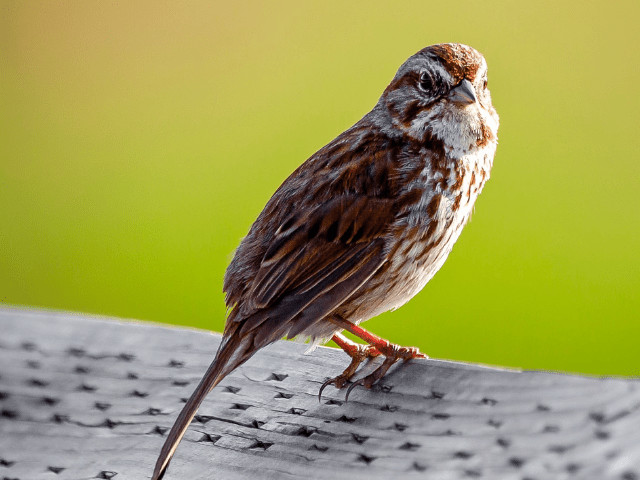Oregon is an enchanting region for birders, don't you agree? There are mountains, valleys like Willamette, desert plateaus, evergreen forests...
It has such an eclectic mix of habitats for various species. Therefore, it's home to over 500 species, about half of which have a resident population. We want to look at a few of them before you decide whether to go bird watching in parks or invest in a bird feeder.
You know, you should try both.
Nothing compares to the experience of watching birds come out of their nests or calling from trees.
Let's look at several Oregon birds below.
Birds of Oregon: Over 15 Species To Discover
1. House Finch
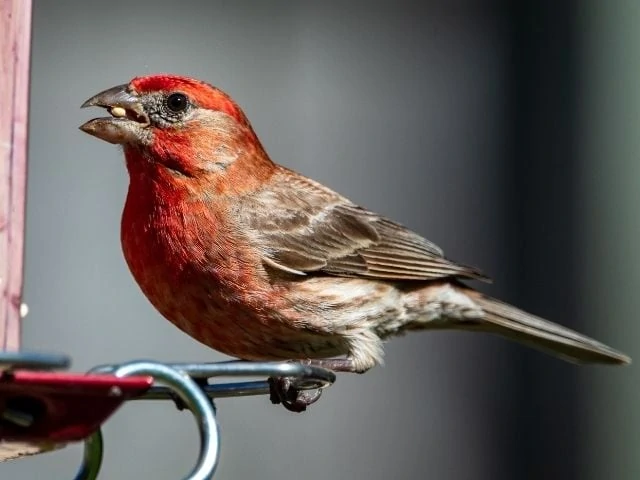
How will you know it's a house finch? Well, you can never confuse the rich red face and chest of a male house finch. The rest of its body is similar to a female's, with characteristic brown streaks.
If it's not collecting seed on the ground under your bird feeder, it's perched in a tree nearby.
2. Western Meadowlark
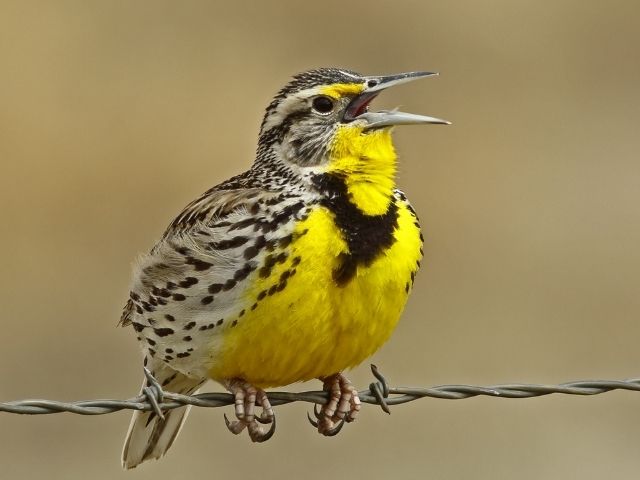
If you use size as the only ID detail, you may mistake it for an American robin. But, when you look closely, a western Meadowlark's tail is shorter, and its body is stockier.
Plus, these two backyard birds have different colors, with an American robin flaunting its exquisite combination of grayish brown back and an orange underside.
Since you'll spot both species in Oregon, you'll see how different they are.
Have you ever wondered about what yellow birds symbolize? You'd be surprised what yellow birds mean to a lot of people!
3. American Crow
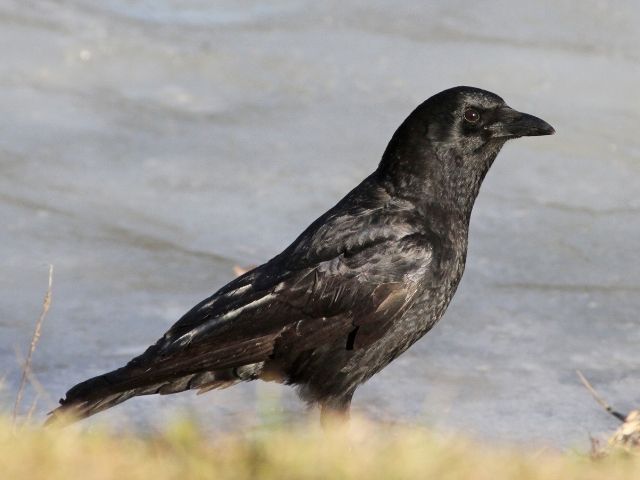
It's one of the few birds with only black feathers; thus, list that down as an ID detail. Something else that'll help you ID it in a park is its caw sound. Luckily, it frequents beaches and backyards, so there's no need to worry if you're not planning on birding in the open fields or woodlands soon.
But, cover your garbage bin as this crow will forage in there. Also, remember that it's an aggressive bird that attacks owls and other large species, yet it's 15 to 20 inches long.
Other favorites this crow eats in the wild are fish, clams, and nestlings. It winters in communal roosts of millions of birds.
FYI: There are more things to learn about this bird! Read about how long do crows live, their habitat, and the dangers they face in surviving.
4. American Goldfinch
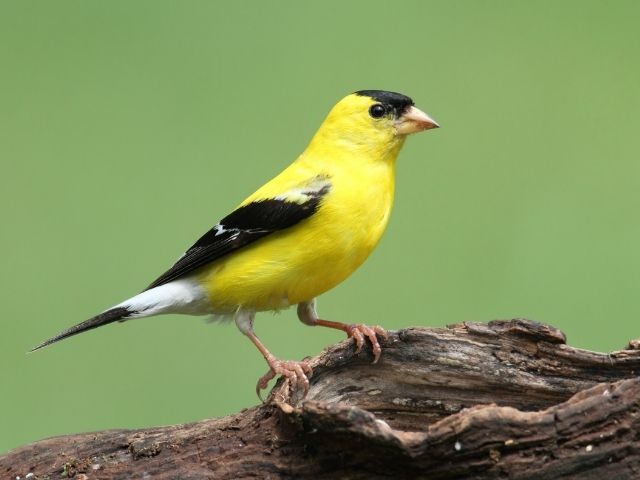
It's not so big as its body length ranges from 4.3 to 5.1 inches. This bird is colorful. Its breeding male has a short tail, thick bill, black and white wings contrasting yellow upper and underparts.
The breeding females have the same pattern but are duller. That's the color of an American goldfinch in spring.
Nonbreeding males have brownish feathers, a yellowish head, and black wings with pale wing bars. Oregon has a breeding and resident population, and watching them fly in flocks is picturesque.
Further, there's a breeding population of lesser goldfinches in Oregon; thus, both goldfinches will congregate at your bird feeder. How will you tell the two goldfinches apart? An American goldfinch can grow longer as lesser goldfinches average 3.5 to 4.3 inches.
Also, a lesser goldfinch male has either a black crown or a full black head and back, contrasting yellow feathers from under the bill to the belly.
5. Bald Eagle
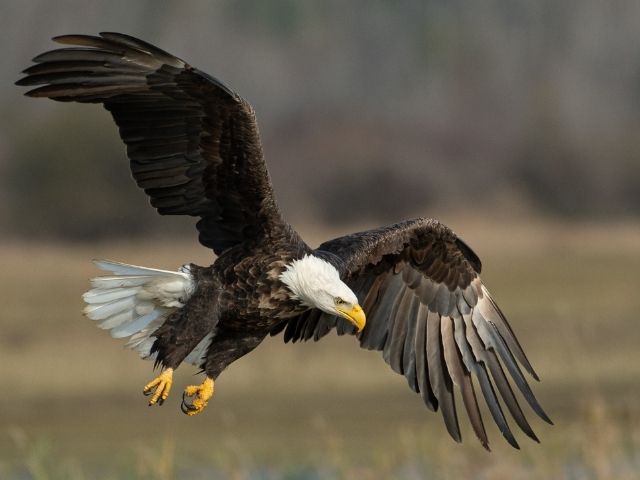
The bald eagle ranks among the largest in this state for its body length between 27.9 and 37.8 inches. It's larger than a goose and has more wingspan than a great blue heron.
The bald eagle lives throughout Oregon, and its presence in large numbers is thanks to recovery efforts that took it off the endangered list in 2007.
Western Oregon has an all-year-round population, while the other is a nonbreeding range. Its best habitats are the shores of lakes, marshes, and oceans since there's a generous supply of food like fish, gulls, and waterfowls.
6. Common Murre
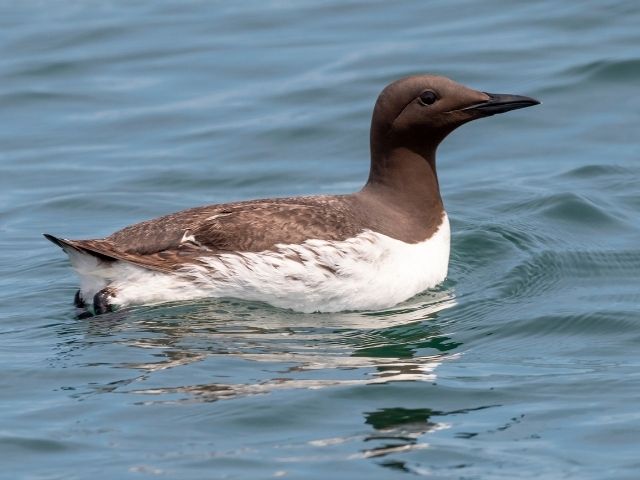
You're lucky there's a resident population along the coastline as the common murre is one of the seabirds found in a few places across the states.
It looks like a flying penguin in the sky because of its black and white plumage. Nonbreeding Oregon birds resemble ducks, but it's not even as big as geese.
7. Mourning Dove
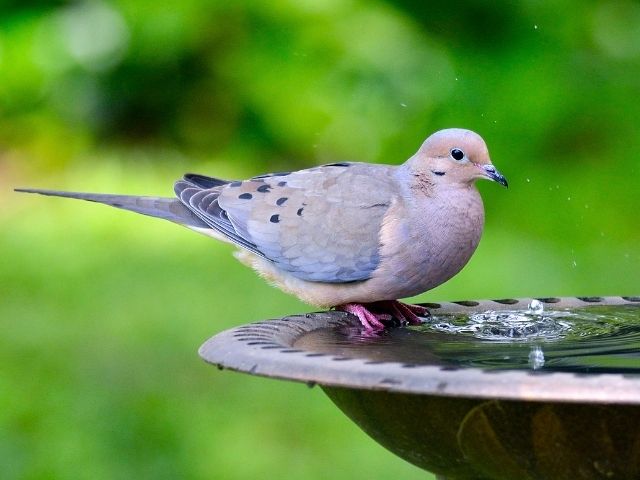
It's medium-sized, at 9.1 to 13.4 inches, but it flies fast. It makes soft calls, and when it takes off, you may hear a whistling sound from its wings. This dove is prevalent across the states, a reason you'll spot it perched on telephone wires or in human settlements.
A mourning dove doesn't have colorful feathers like some backyard Oregon birds listed here. However, its grayish plumage is also stunning. The upper parts have grayish feathers, black spots on the wings, pink legs, a small head, and a long tail.
FYI: The Mourning Dove is one among the birds of Kentucky that visitors and bird watchers alike can't resist viewing!
8. Song Sparrow
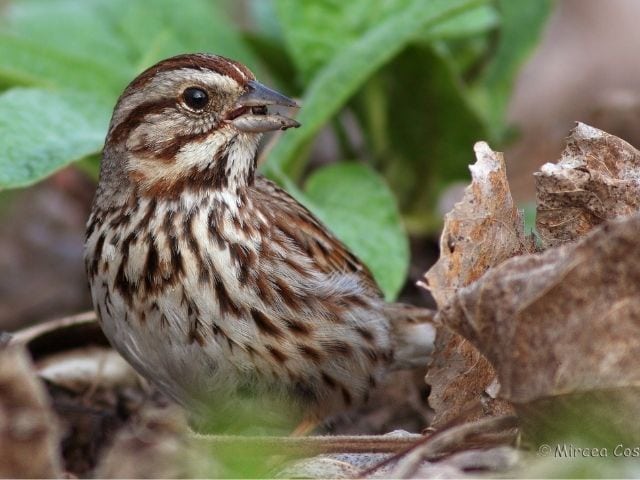
It's almost the size of a house sparrow as the song sparrow is between 4.7 and 6.7 inches long, while the latter grows between 5.9 and 6.7 inches long.
However…
They also have almost similar brown-streaked plumage and both frequent backyard feeders. Fortunately, both backyard birds live in Oregon, and you'll see the white-crowned sparrow too.
9. Downy Woodpecker
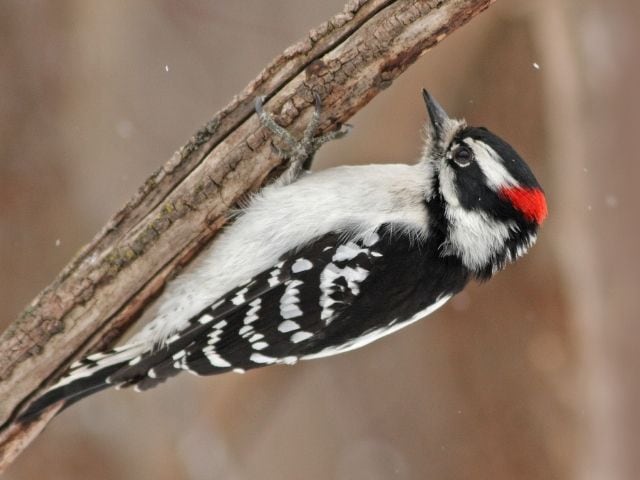
Maybe, the birds in your backyard with white and back feathers are downy woodpeckers. To be sure, look for a red nape.
Downy woodpeckers are small birds that love black oil sunflower seeds, peanuts, and millet.
They winter in mixed-species flocks with chickadees and other small birds.
The downy inhabit many places, such as river gloves and forests with deciduous trees or conifers. Its small size lets it forage in weeds or any other vegetation.
10. Varied Thrush
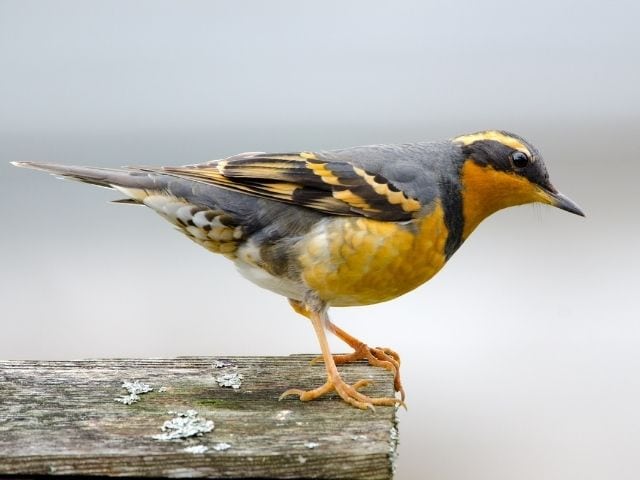
Wow! This one you have to see because its range is a strip of the western states only, and Oregon is among these lucky regions. You'll see it in many parts of western Oregon. In summer, a varied thrush eats insects but switches to berries and seeds in the winter months.
It has the same colors as an American robin with a bluish-gray back and a dark orange underside. Its wings are black with orange bars. You can tell the male from the female as a male's feathers are brighter than a female's.
Another thrush common in western states is the mountain bluebird.
11. European Starling
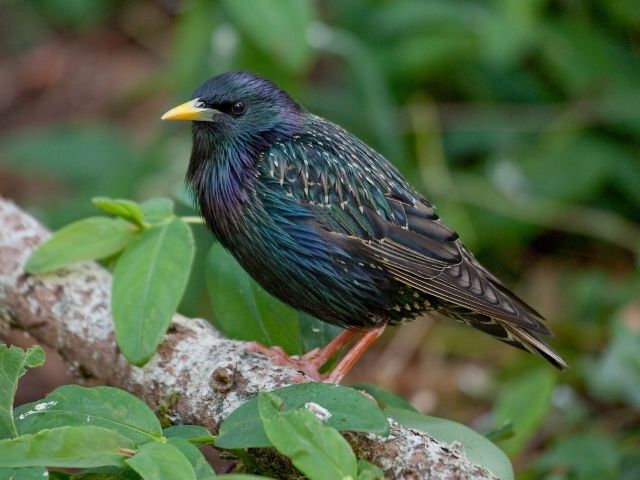
It's one species you'll see almost everywhere in the US. The European starling is a small bird averaging 7.9 to 9.1 inches in body length. Its plumage is purplish-green; its colors are different from the whites and blacks discussed so far.
They also perch on telephone wires and love traveling in flocks of blackbirds or grackles. The European starling can mimic the call of so many birds, such as the northern flicker, red-tailed hawk, and the American robin.
12. Tundra Swan
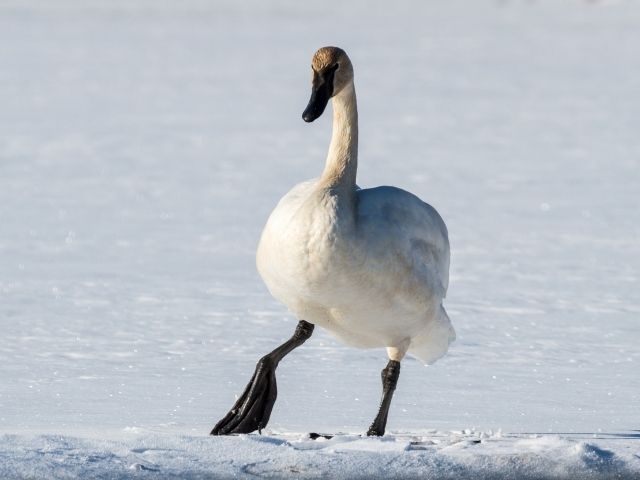
It winters in North America, on lakes and other water bodies. In this state, you can see it in Malheur National Wildlife Refuge.
A tundra swan's nesting grounds are in the arctic tundra, and parts of the shoreline in the western states of California to Washington have a year-round population.
This swan is smaller than a trumpeter swan as its maximum body length is 57.9 inches. It has a white body with a yellow patch above the eyes. Lastly, these North American birds move in flocks and sometimes gather food in agricultural fields.
13. Flammulated Owl
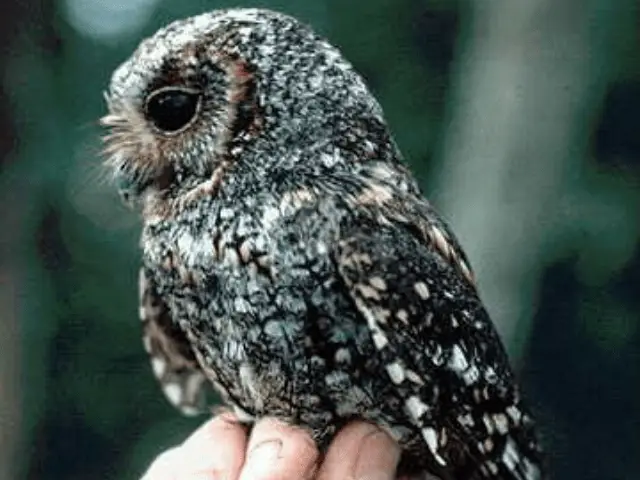
Breeding and migratory birds dot some states, including Oregon. It's a small owl that may grow between 5.9 and 6.7 inches long. Its feathers have gray, brown, and rusty colors that camouflage when it perches on branches.
That makes it easy to hunt insects in coniferous or deciduous forests. This owl spends winter in Central America and parts of Mexico.
14. Spotted Towhee
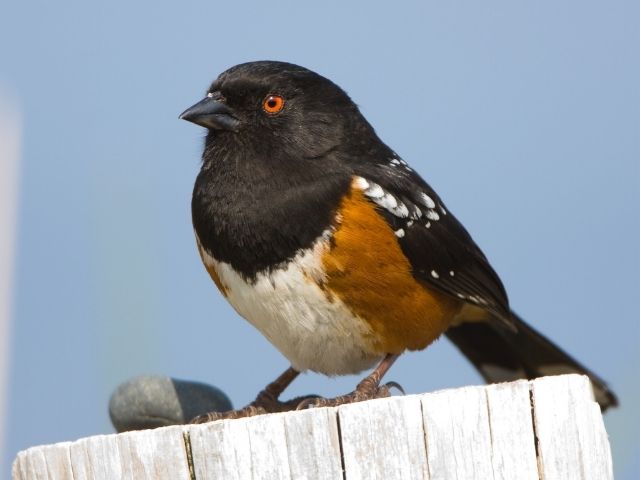
It's a small bird with a long tail, a spotted back, and a reddish-brown underside. You may see the spotted towhee foraging on the ground, looking for insects like caterpillars, wasps, and beetles. But that's not all, as it also eats acorns, berries, and seeds.
15. Dark-eyed Junco
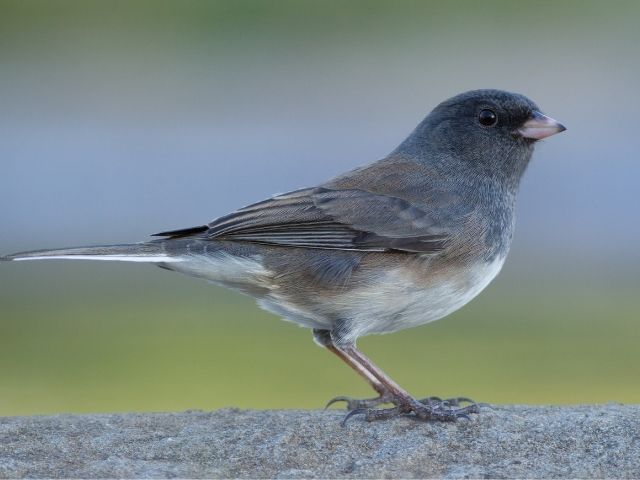
This species winters in North America and spends the rest of the year in woodland floors or backyards. The dark eyed junco is larger than a chipping sparrow as its length lies between 5.5 and 6.3 inches, whereas the body length of a chipping sparrow is 4.7 to 5.9 inches.
A male species in Oregon has a dark brown head and throat. It looks like it's wearing a hood. Further, its back is light brown, contrasting a whitish belly.
16. Black Oystercatcher
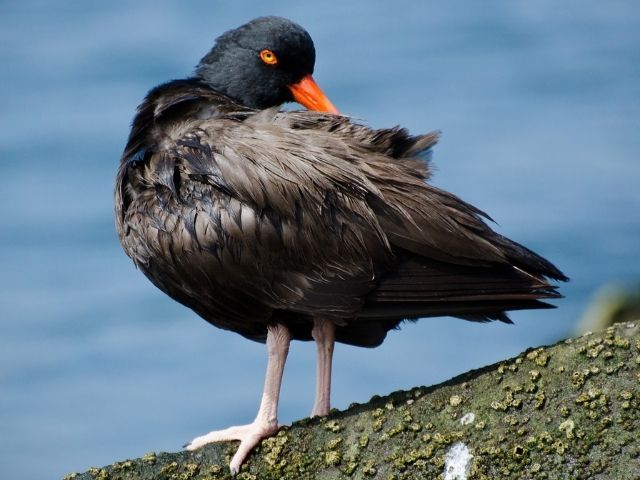
Have you seen the colorful shoulder patches of a red-winged blackbird? A black oystercatcher has a beak in that bright reddish-orange hue contrasting its black head and chocolate brown body feathers. Plus, its eyes are yellow, and its legs are pale pink.
This shorebird lives along the Pacific coastline of the Americas. It's the size of a crow, between 16.5 and 18.5 inches long.
17. Northern Flicker
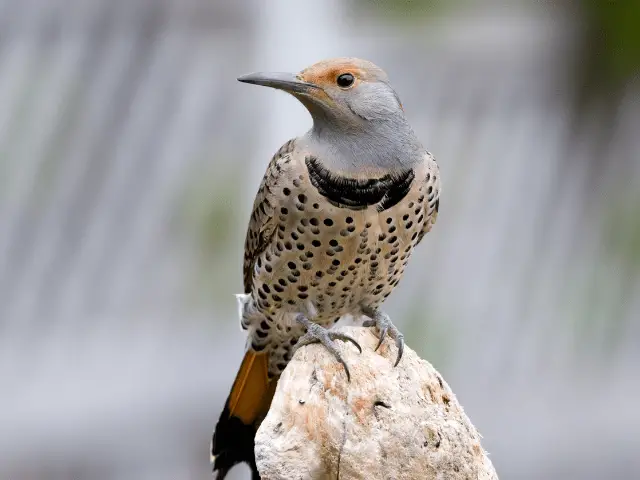
Unlike other woodpeckers that feed on trees, this one forages on the ground. Even when it visits your backyard, you'll find it digging insects like beetles using its long tongue to draw them out of their hiding. This woodpecker has migratory habits, so there's a breeding population in North America. You're lucky that Oregon has a year-round population.
When it flies, you'll notice a white spot on the rump. A red-shafted northern flicker, found in the eastern states, has a red spot on its cheek and under the wings, while a yellow-shafted one has yellow flight feathers and inhabits eastern states.
18. Rufous Hummingbird
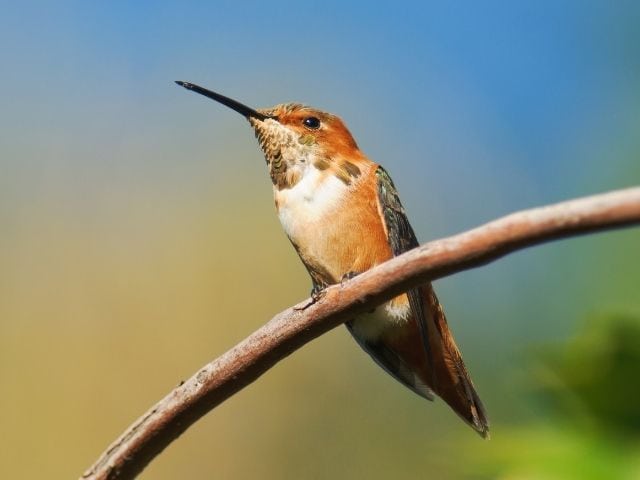
Even before we finish complimenting the beautiful colors of the northern flicker, enter a rufous hummingbird. Where do we even start?
It's tiny, growing between 2.8 and 3.5 inches with a small wingspan of 4.3 inches. Both sexes have long, thin bills. But, the male has the most colorful feathers with orange and black upper parts and a red throat.
If such a bird shows up at your feeder, be ready with a camera. However, it's aggressive, often making other hummingbirds feel unwelcome.
19. American White Pelican
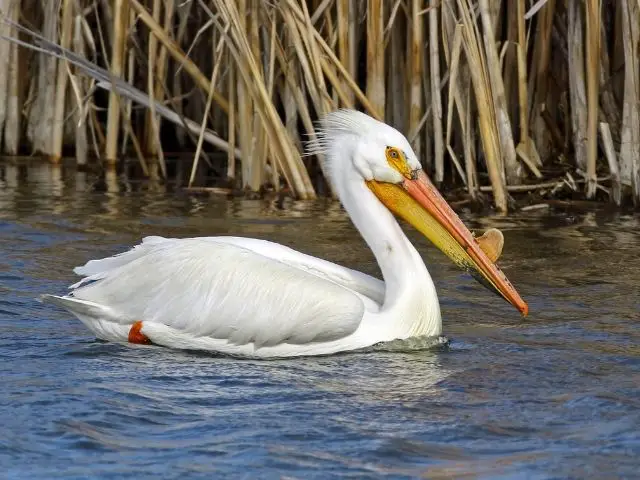
Oregon hosts some breeding birds on its southern side, while the eastern region has a migratory population. The American white pelican is a large waterbird with stunning black and white feathers, a long bill, plus a long neck.
What's more, it's larger than a brown pelican.
Have you spotted any of these avian friends near your bird feeder?
Let's learn more about them by answering your commonly asked questions below.
Frequently Asked Questions
What Is The Largest Bird In Oregon?
When we consider body length, an American white pelican is the largest as it grows between 50 and 65 inches long compared to the 54.3 and 62.2-inch body length of a trumpeter swan. On the other hand, when we think about wingspan, a trumpeter swan's 79.9 inches makes it smaller than an American white pelican's 96.1 to 114.2 inches.
Watch this video of American White Pelicans feeding on small fish in central Oregon:
What Is The State Bird Of Oregon?
It's the western meadowlark. Other states like Kansas, Wyoming, and North Dakota also treasure this bird. How did the state go about this? The Oregon Audubon Society sponsored a poll in 1927, and school kids chose it.
Oregon has a breeding range of western meadowlarks on the tip of its northeastern region. You'll come across two varieties of western meadowlarks. Nonbreeding adult birds have streaked feathers, a brown bill, and a yellow underbelly. On the other hand, a breeding bird has a brighter yellow underbelly and a distinct streaked back. A black-colored V runs from its neck down its chest.
Are Chickadees Found In Oregon?
Yes, and there are different types of chickadees. Chestnut-backed chickadees live in the Oregon Coast Birding Trail, mountain chickadees like Crater Lake National Park, and black-capped chickadees also inhabit this state.
What Blackbirds Live In Oregon?
You may spot the red-winged blackbird, brewer's blackbird, bobolink, and yellow-headed blackbird. But some of them are only in parts of the state -- from central Oregon eastwards. For instance, bobolinks and yellow-headed blackbirds have a breeding range in eastern Oregon. Brewers and red-winged blackbirds have a year-round population all over the state.
Let's conclude our discussion…
Final Thoughts
Have we convinced you that this state has unforgettable birding tours? Imagine the joy of sighting shorebirds that are only on the coastline of major oceans. In eastern Oregon, you have Zumwalt Prairie, with over 160,000 acres for hawks and sparrows to inhabit.
Central Oregon has the Klamath Basin National Wildlife Refuges, where hundreds of bald eagles winter, Lake Abert, and Summer Lake Wildlife Area. Lastly, the Oregon coast has Boiler Bay Wayside and Tillamook Bay. There's adventure everywhere!

